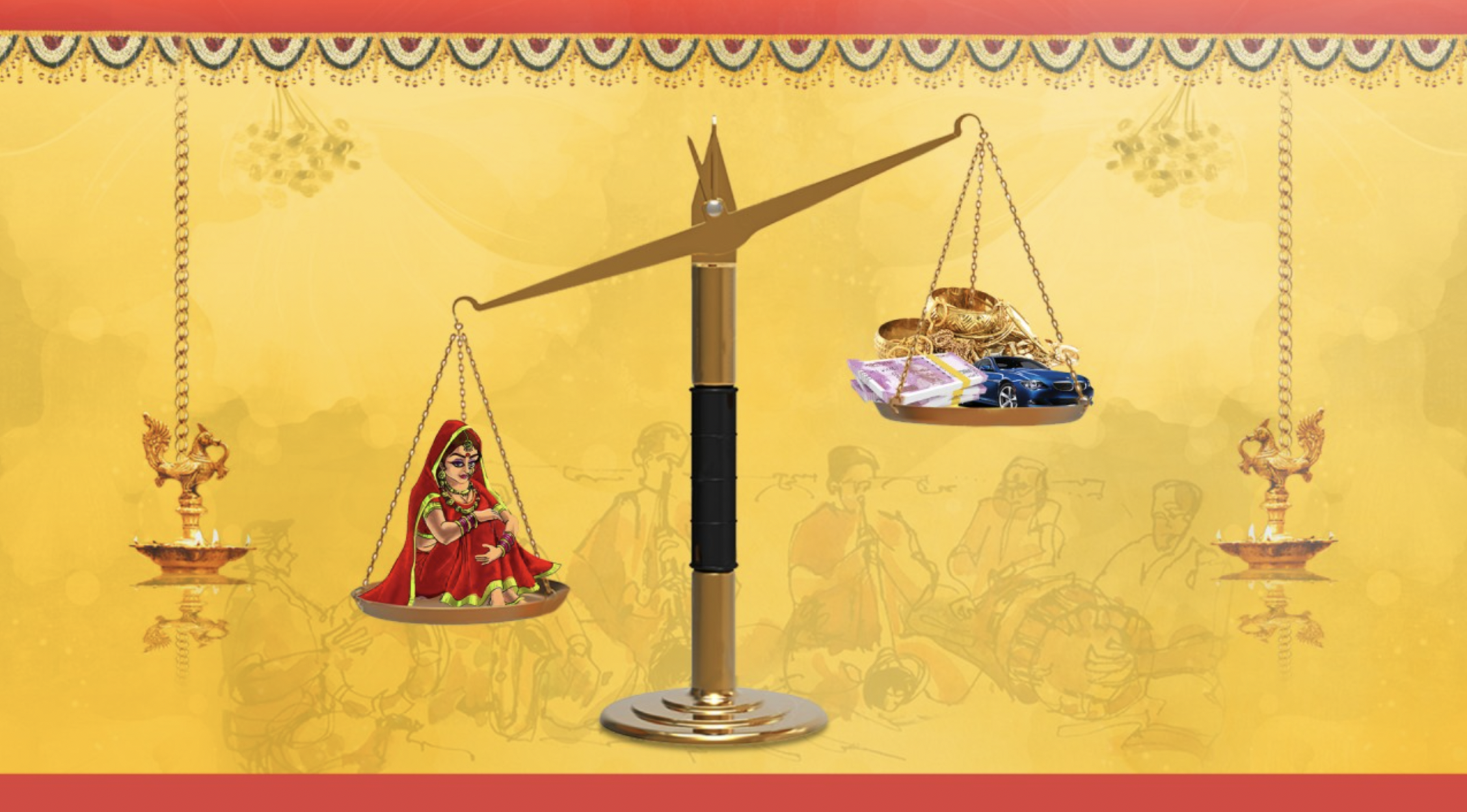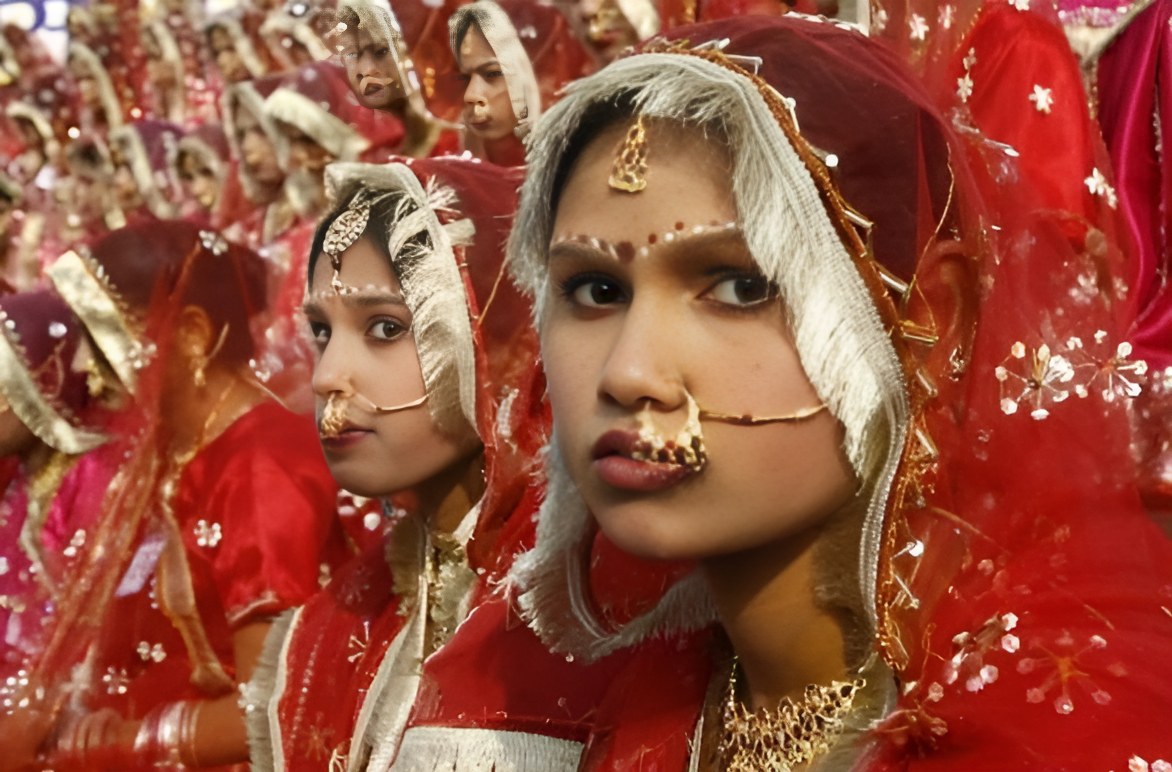The history and implications of tHE Dowry System In India
Informational Article by Jasarja Sethi

The Dowry System in India is a practice where a bride’s family gives gifts, money, or property to the groom’s family as part of the marriage. While it might sound like a simple exchange of gifts, it has often led to serious problems and is illegal in India today. Traditionally, a dowry was seen as a way to help the newly married couple start their life together. The bride’s family would gift things like jewelry, household items, and money to the groom’s family, intending to provide the bride financial security in her new home. Over time, however, the custom changed, and many families began demanding more and more.
Think of it like this: Imagine you're giving a friend a present for their birthday because you care about them. That’s how dowry used to be- a loving gift to help a new couple. Then, some people started expecting bigger and better presents, and even getting angry if they didn’t get exactly what they wanted. That’s what happened with dowry. It went from a nice gesture to a demand, where the groom’s family expects the bride’s family to pay them for the marriage. This change made things very unfair and caused many problems for Indian women.
The origin and background history of dowry is complex, so identifying the moment when the system began isn’t entirely clear. Some historians believe that it started as a way to ensure that women had some economic security after marriage. Back then, women in India were not always allowed to inherit property, so a dowry was a way to give them a share of their family’s wealth. Others suggest that it was a way to maintain social status, with families using dowry to marry their daughters into wealthier and more successful families. Over the years, the dowry system has become a social evil. Rather than being a voluntary gift, it has turned into a demand. The groom’s family often asks for specific terms or amounts of money, and if the bride’s family cannot meet these demands, it can lead to serious problems, in some cases as extreme as kidnapping the bride and torturing her and her family.
When dowry became a demand, it created a lot of problems. Families who weren’t rich were forced to give a lot of money or things to the groom’s family. They often had to borrow money or sell their belongings, making them even poorer. The bride also faces a lot of pressure. If her family couldn’t give enough dowry, the groom’s family might treat her badly. They could be rude, make her feel unwanted, or even hurt her.
One of the biggest problems is the financial strain on the bride’s family. Many families in India are not wealthy, and they have to save for years or even take out loans to pay the dowry. This can leave the bride’s family drowning in debt and poverty. Another serious issue is the pressure it puts on women. If a bride’s family cannot pay the dowry, she may face harassment, abuse, or even violence from her husband and his family. In some extreme cases, women have been killed for not bringing enough dowry. For instance, The National Crime Records Bureau of India reported 8,233 dowry deaths in 2012—in other words, one wife is killed every 60 minutes. These deaths are often disguised as accidents or suicides. Because of these problems, the Indian government passed the Dowry Prohibition Act in 1961. This law makes it illegal to give, take, or demand dowry. According to the law, anyone who violates it can be fined or sent to jail. Despite this law, the dowry system is still practiced in many parts of India.
So, what’s the connection between money problems and violence? Well, if the bride’s family can’t pay the dowry, the groom’s family might get angry. They might think the bride is “worth less” because her family didn’t give them enough. This anger can lead to them mistreating the bride, both emotionally and physically. It’s a terrible situation where a woman’s safety and well-being depend on how much money her family can give.
There are several reasons why the dowry system has continued, even after being outlawed. One reason is that it is deeply ingrained in Indian culture, and as a result, many still believe that it is a necessary part of marriage. Another reason is that it is difficult to enforce the law. Dowry transactions are often done in secret, and it can be hard to prove that they took place. Additionally, social pressure and the fear of social stigma often prevent families from reporting dowry-related crimes.
It’s like having a rule that says you can’t litter, but people still throw trash on the ground. Why? Maybe they don’t know about the rule, or they don’t think they’ll get caught, or they just don’t care. The same thing happens with the dowry law. Some people don’t know it's illegal, some think they can get away with it, and some still believe it’s the right thing to do, even though it’s against the law.

Many organizations and individuals are working to stop the dowry system in India. They are raising awareness about the issue, providing support to victims of dowry-related violence, and advocating for stricter enforcement of the law. Education is also seen as a key tool in changing attitudes about dowry. By educating people about its harmful effects and promoting gender equality, it is hoped that the practice will eventually disappear.
Basically, lots of good people are fighting to end dowry. They’re spreading the word about how bad it is, helping women who’ve been hurt by it, and pushing for the law to be taken seriously. They believe that if everyone knows that dowry is wrong, and if girls are valued as much as boys, then this problem will go away for good.
To end the dowry system, we must educate people about the harmful effects of dowry, enforce the Dowry Prohibition Act more strictly and punish those who violate it, and finally, empower women so that they are not seen as burdens and can support themselves financially. This will raise awareness about the issue and encourage people to report dowry-related crimes.
To sum up, dowry is an illegal, dark problem in India that leads to violence. To end it, we need a change: teach everyone why it’s so bad, punish those who break the law, help women earn their own money, and change how society sees women so they’re valued for who they are. Awareness and strong laws aren’t just helpful; they’re the key to a future where women are safe, respected, and judged by their dreams and strength, not by dowry. Only then can we eliminate this terrible practice and create a fair society for all women.
